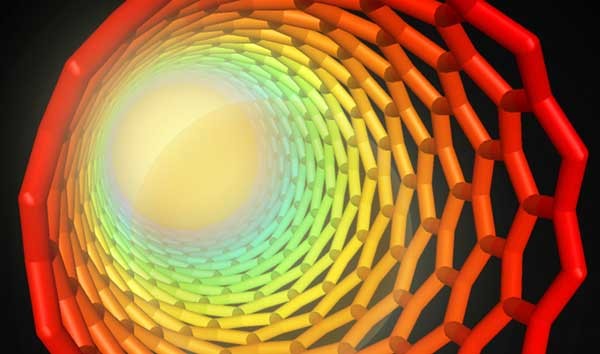
Scientists Discover New Way to Generate Electricity
Researchers have found a way to produce large amounts of electricity from tiny cylinders made from carbon atoms.
The achievement could replace decades-old methods of generating electricity, such as combustion engines and turbines.
Coated carbon nanotubes crafted from individual atoms could power everything from cell phones to hybrid-electric vehicles. The team envisions such nanotube-based power being available to consumers in the next five years.
Carbon nanotubes are thin sheets of carbon rolled up into teensy tubes each 10 times smaller than today’s cell-phone batteries but still hold the same amount of power. Furthermore, unlike today’s batteries, the carbon nanotube variety would not contain any toxic metals.
Researchers coated the nanotubes with a fuel, such as gasoline or ethanol, and applied heat to one end. The result: The fuel reacts and produces more heat, which ignites more fuel to create even more heat.
The process creates “a wave that travels like dominoes falling in a line down the length of the nanotube.
The resulting heat wave, it turns out, also creates a wave of electrons moving in one direction.
The thermal wave squeezes electrons out of the nanotubes like a tube of toothpaste.
With some tweaking, the carbon nanotubes could even power a car. But instead of coating the carbon cylinders with fuel, a liquid fuel could be stored in the car's gas tank and get injected onto the carbon nanotube battery when needed.
We have a lot of engineering challenges that we have to overcome in order to make this a commercial device, "but nothing is as difficult as the initial discovery."
 English
English Arabic
Arabic


